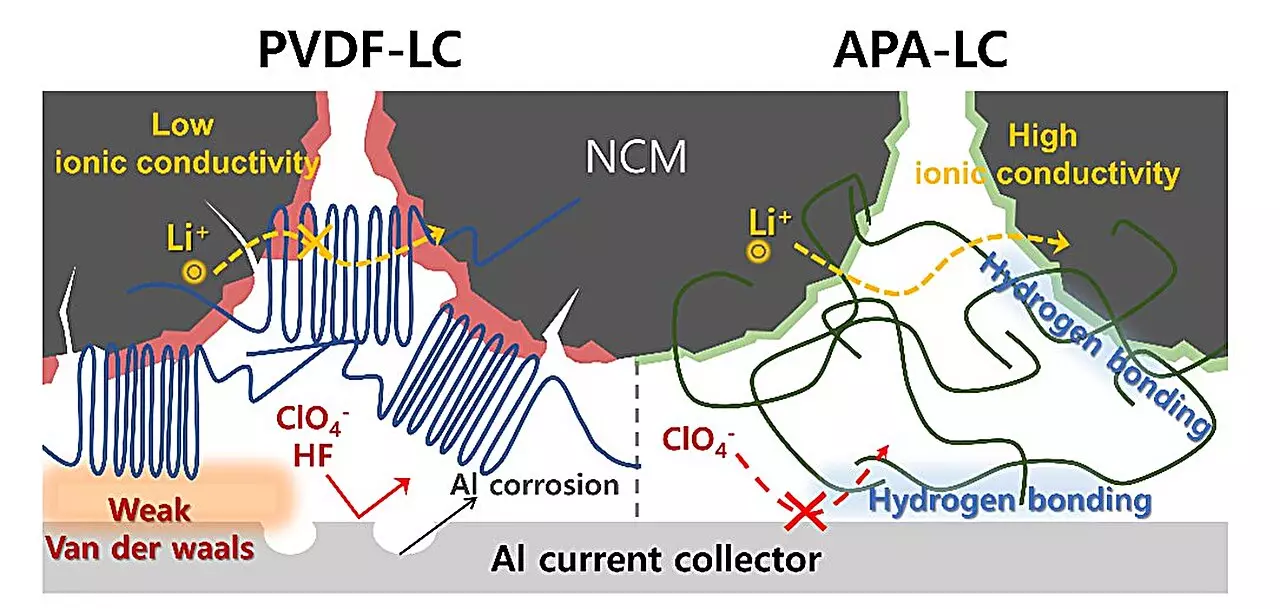The pressing need for environmentally friendly technologies has never been more critical, especially in the field of energy storage. Traditional lithium-ion batteries, which dominate the market, contain fluorinated compounds that pose significant environmental hazards during production and disposal. Recent research has unveiled a groundbreaking new battery technology that is entirely free from fluorine, potentially transforming the landscape of energy storage by moving toward more sustainable solutions.
The current generation of lithium batteries utilizes materials such as polyvinylidene fluoride (PVDF) and lithium hexafluorophosphate (LiPF6), both of which release harmful byproducts like hydrogen fluoride (HF) when exposed to environmental stresses. This poses a dual threat: not only does it compromise battery performance and longevity, but it also presents a severe environmental challenge. The EU’s stringent tightening of regulations regarding per- and poly-fluoroalkyl substances (PFAS) is driving an urgent need for alternatives as a ban on these substances is anticipated as early as 2026. As scientists and manufacturers seek to innovate, the focus is shifting towards the development of non-fluorinated materials to meet these regulations and address the dire sustainability challenges facing the battery industry.
In response to these challenges, a collaborative research initiative between POSTECH and Hansol Chemical has produced an innovative battery system that replaces toxic fluorinated components with non-fluorinated alternatives. This new system, dubbed APA-LC, features lithium perchlorate (LiClO4) as the electrolyte and a non-fluorinated aromatic polyamide (APA) as the binder. The research showcases not only compliance with anticipated regulations but also the potential for enhanced battery performance.
The new APA binder plays a critical role by securing robust connections between the active materials of the cathode and the aluminum current collector, thereby mitigating electrode corrosion. This is a pivotal advancement, as corrosion can significantly impede battery efficiency and lifespan. Furthermore, the APA-LC electrolyte improves ion transport, which allows for faster lithium diffusion, ultimately leading to a higher performance output when compared to traditional systems.
When evaluated against conventional systems, the APA-LC system outshines its fluorinated counterparts. In a series of rigorous tests, the APA-LC configuration demonstrated superior oxidation stability, with a capacity retention that was 20% greater after 200 charge/discharge cycles. This remarkable performance was achieved at a rapid charge/discharge rate of 1 C, operating within a voltage range of 2.8 to 4.3 V. The culmination of these findings confirms that the APA-LC system not only adheres to environmental standards but also excels in efficacy.
The development process culminated in creating a high-capacity 1.5 Ah pouch cell, which not only retained excellent discharge capacity but also excelled in fast-charging scenarios. This deployment showcases the potential of a scalable battery system made entirely from non-fluorinated materials—marking a significant milestone in battery technology.
Industry stakeholders are optimistic about the implications of this breakthrough. Professor Soojin Park from POSTECH has stated that this innovation not only replaces hazardous fluorinated systems but also provides proven high-capacity retention with improved stability. This aligns seamlessly with the growing demand for sustainable battery solutions and could potentially accelerate the industry’s transition towards non-fluorinated materials.
Moreover, Hansol Chemical’s Managing Director Young-Ho Yoon highlighted the strategic importance of this development within the global cathode binder market, anticipated to reach KRW 1.7 trillion by 2026. The company’s focus on addressing PFAS regulatory concerns positions it to secure a competitive edge in a rapidly evolving marketplace.
The development of the APA-LC battery system exemplifies a pivotal shift in energy storage technologies, addressing both environmental concerns and performance efficiency. As research continues to evolve, the transitions towards more sustainable materials in battery manufacturing are likely to redefine industry standards and consumer expectations alike. The collaboration between academic and industrial entities is not just a response to regulatory pressures; it represents a collective vision for a more sustainable future in energy storage solutions. The ongoing pursuit of innovation in non-fluorinated battery systems is a promising step towards a greener, cleaner planet.


Leave a Reply